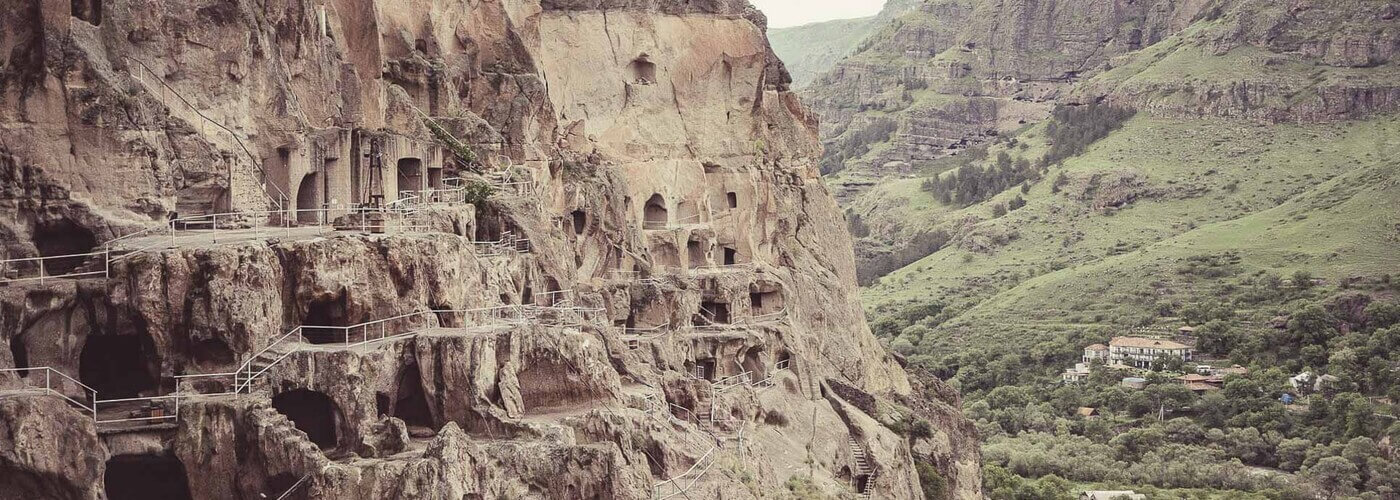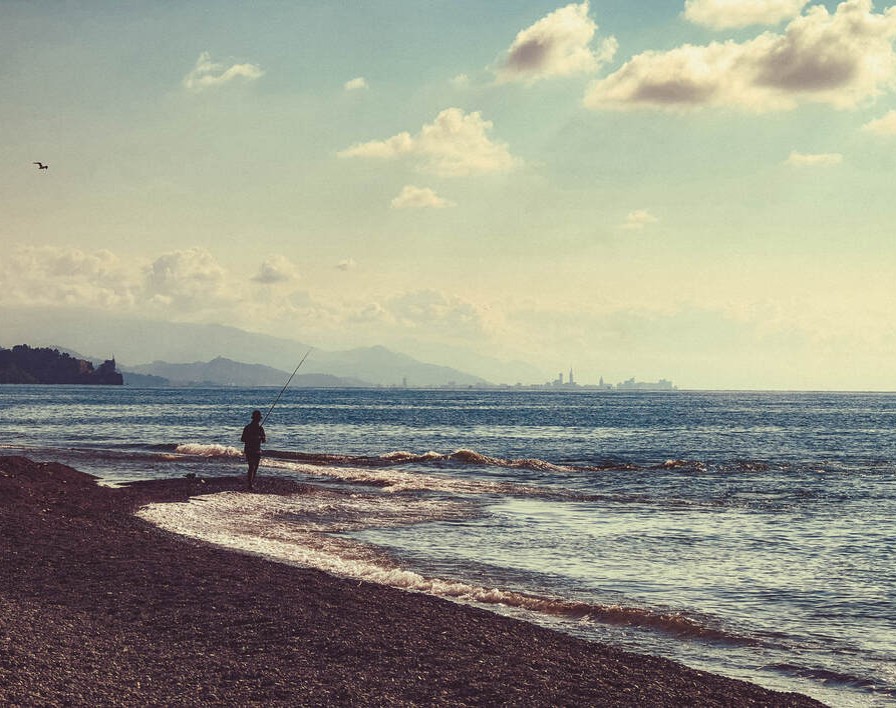- 4
- 1
- 2
- 3
- 3
- 2
- 2
- 2
- 4
- 2
- 4
- 4
- 1
- 1
- 1
- 1
- 1
- 1
- 1
- 1
- 1
- 3
- 3
- 1
- 3
- 3
- 3
Vardzia
Samtske-Javakheti, Georgia

Vardzia is the biggest rock-hewn town in Georgia. The cave town from the 12th century played a significant role in Georgian history.
The cave town Vardzia is located in the Javakheti region in the southwest of Georgia on the left bank of the river Mtkvari in the middle of a huge gorge that offers unforgettable views. To this day, some monks still live in the caves. Every morning at seven they ring the bell in the high arch.
Legend of the name’s origin
According to a legend, Vardzia has got his name as follows. King George III was hunting in this area with his daughter Tamar, but Tamar got lost in the caves. When the king realized that they lost her, everyone started to search for her. One of the huntsmen started to shout: «Where are you, Tamar?». They finally heard her voice coming from inside the caves: «Ak vard dzia», which is Georgian and means «I am here uncle». Hence the name Vardzia.
Vardzia’s long history
The construction of the fortress was started by Giorgi III and finished by his daughter, Queen Tamar, who changed its original designation as a fortress and introduced it as a massive, fortified monastery. The complex was mostly constructed between 1156 and 1203.
In 1551, Vardzia was sacked by the Shah of Iran, Tamaz I. The Persians stole the famous icon of Mary, golden and steel doors, and many other treasures. In 1578, Vardzia was again sacked by the Turks. Many monks were killed, whoever survived was scattered in different directions and the monastery became uninhabited. After Soviet rule was established in Georgia, at first, Vardzia was a tourist base and later, in 1983, a museum was established. In 1989, with the blessing of the Catholicos-Patriarch of Georgia, Ilia II, the liturgy was revitalized again as well as the monastery life later in 1999.
Church of the Dormition
The Church of the Dormition was the central spiritual and monumental focus of the site. Carved similarly from the rock, its walls reinforced in stone, it measures 8.2 meters by 14.5 meters, rising to a height of 9.2 meters. On the north wall are portraits of the royal founders, George III and Tamar; she lacks the ribbon that is the attribute of a married woman and her inscription includes the formula «God grant her a long life», while that of Giorgi does not; this helps date the paintings to between Giorgi’s death in 1184 and Tamar’s marriage in 1186.
On the rear wall of the sanctuary, behind the altar, are Twelve Church Fathers. In the narthex are scenes of the Last Judgment, Bosom of Abraham, Angels bearing a Medallion with the Cross, and three scenes from the life of Sint Sthepen; other paintings were lost in the 1283 earthquake.
Trips to Vardzia

Highly recommended if you want to discover all three countries of the South Caucasus with all its facettes during just one trip.
- Jan
- Feb
- Mar
- Apr
- May
- Jun
- Jul
- Aug
- Sep
- Oct
- Nov
- Dec

